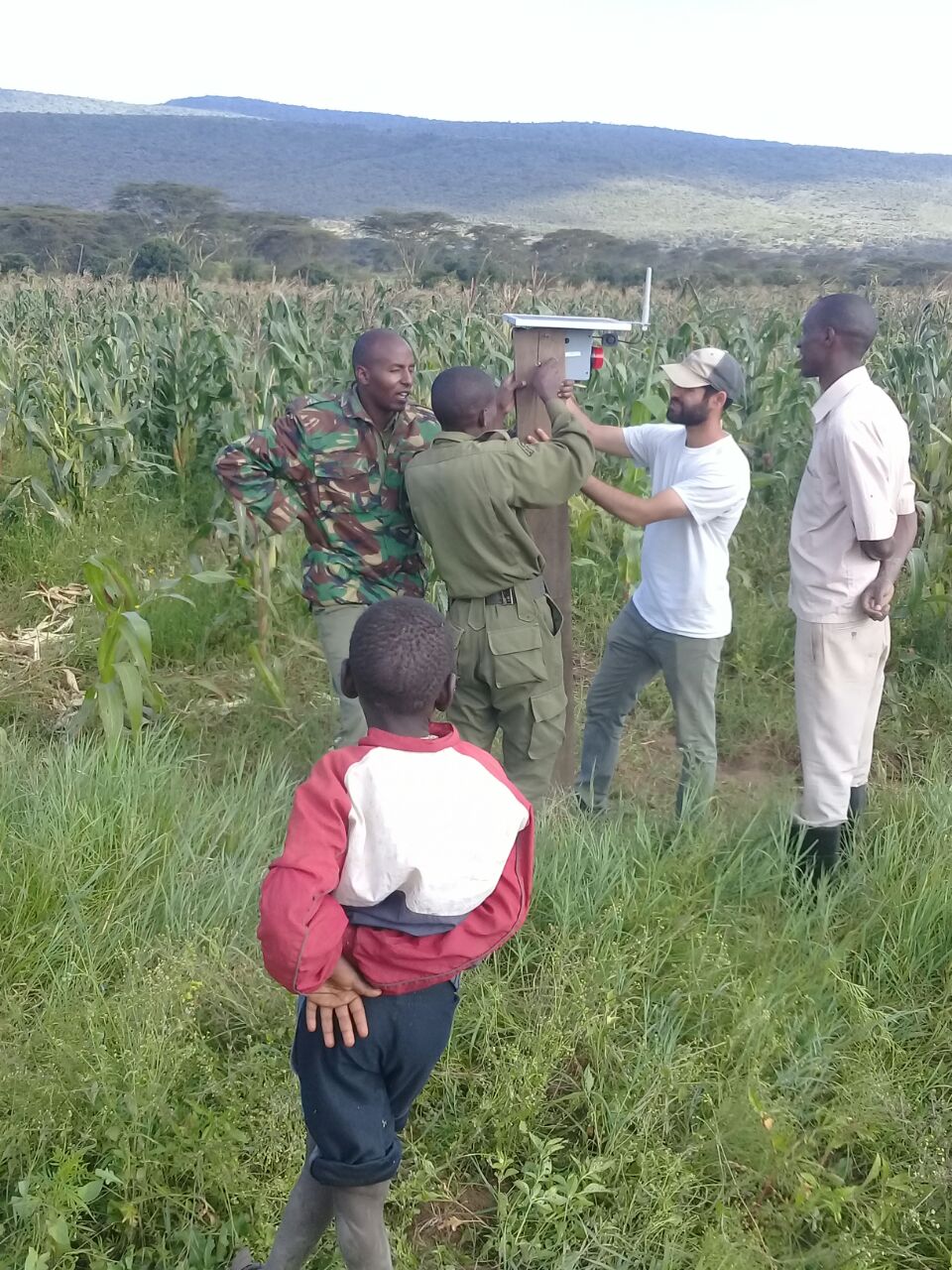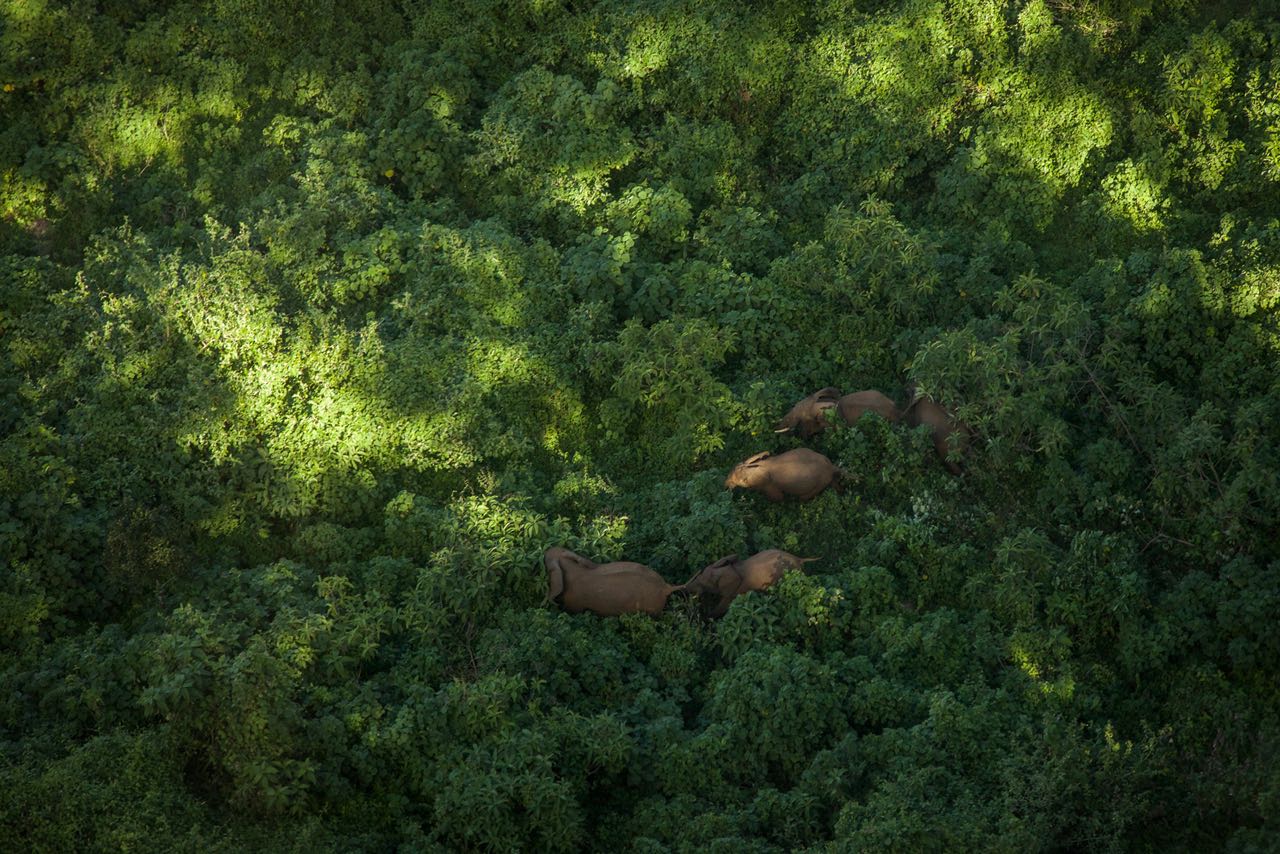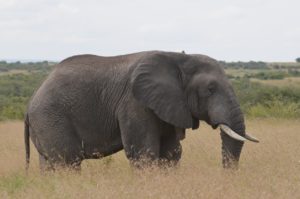MEP Monthly Report June 2018
The Mara has started to dry up and, as maize crops ripen, human-elephant conflict (HEC) is on the rise in all areas of MEP operations except Isokon in the Transmara where farmers have not planted yet. MEP rangers continue filling out MEP HEC forms and mitigation forms and bringing them to MEP HQ at the end of the month for data to be entered into DAS. This month there was an increase in the human-elephant conflict cases in the Lemek and Munyas area. In Lemek and Munyas, elephants destroyed maize farms, but MEP rangers were able to put flashing light fences in a few farms and also put the new base lighting system with alarms that can trigger when collared elephants are nearby to scare them and awake the farmer to respond. We are still characterizing the efficiency of these systems. Unfortunately, two carcasses were reported in Olkinyei Conservancy, the cause of death was conflict. Fortunately, human-elephant conflict injuries have decreased, and we’ve only assisted the KWS vet with the David Sheldrick Wildlife Trust (DSWT) Mara Mobile Vet Unit with two treatments in the Siana area.

Flashing light fences being installed around farms in Munyas.
MEP had an extremely notable ivory seizure in June when the MEP intelligence team connected with Kenya Wildlife Service (KWS) in Naivasha to set up a successful sting operation by arresting one suspect with 12 pieces of ivory weighing 41 kg and two leopard skins.

The large ivory seizure and leopard skins confiscated.
We were very fortunate to find elephants on several occasions in the Loita Forest due to the dense foliage. Large herds of approximately 20 to 40 individuals were coming into openings in the forest and after first sighting them from the air, we moved into position to collar one female elephant in a herd of 40 individuals on June 5. The collaring operation was demanding, and the team worked well in the thick forest conditions. “Amare,” the new Loita elephant has already been showing interesting movements and rarely comes out of the forested area. We have been trying to collar in Loita for some time, so this achievement is exciting! Yet again, the Robinson R44 continues to be a vital tool in collaring operations. during the collaring operation in the Loita Forest, we visited villages for local intelligence around the forest, ferried in ground teams to the collaring site, darted a female and followed her until she went to sleep, and then perched in a tiny clearing while we dropped single team members off at the collaring site. The Karen Blixen Camp Ree Park Safari was extremely impressive at high altitude and easy maneuverability in the dense forest.
 An elephant herd in the Loita Forest.
An elephant herd in the Loita Forest.
 On June 14, we recovered Earhart’s collar in Mosiro. The hardware failed, and we will need to re-collar in this large herd. In July we plan to collar new elephants in the Mau, Mosiro, and Nyekweri. On June 26, collared elephant Matoba, who was collared by Grumeti in Tanzania in February was found by KWS vet Dr. Limo at the KWS research station in the Maasai Mara National Reserve. We could not identify the elephant and after reporting this to Grumeti, they confirmed it was indeed Matoba (pictured left). This demonstrates the need for cross-boundary sharing of real-time data between our two organizations. More to come on this soon.
On June 14, we recovered Earhart’s collar in Mosiro. The hardware failed, and we will need to re-collar in this large herd. In July we plan to collar new elephants in the Mau, Mosiro, and Nyekweri. On June 26, collared elephant Matoba, who was collared by Grumeti in Tanzania in February was found by KWS vet Dr. Limo at the KWS research station in the Maasai Mara National Reserve. We could not identify the elephant and after reporting this to Grumeti, they confirmed it was indeed Matoba (pictured left). This demonstrates the need for cross-boundary sharing of real-time data between our two organizations. More to come on this soon.
Sadly, on the June 23 there was an attack on a bar in Esoit. Football fans had filled up the bar when three attackers armed with AK-47 assault rifles burst in and injured two and killed two. One of the victims fatally shot was 58-year-old KWS ranger, Mr. Samuel Okumu. Okumu had previously been attached to MEP and we had conducted a number of operations together. We are actively looking for this gang and have a lead on one of the suspects. The KWS and General Service Unit (GSU) have recovered seven illegal firearms in this portion of the Transmara already.
 Seedballs Kenya just launched a fundraising initiative to help fund seedball packs for MEP rangers to distribute while out on patrol. We are very happy to participate in Seedball Kenya’s mission to regenerate Kenya’s forests. The TUSK Trust Safaricom Marathon took place June 30 at LEWA Wildlife Conservancy. The money raised from this marathon goes directly to MEP rangers and operations. We appreciate the support from the runners and TUSK. Also, thank you to Ashley for raising money for MEP on Facebook! So far she’s at $150 of her $500 goal. C.E.O. Marc Goss hosted a large group of visitors to the Mara staying at Angama Mara that included the C.E.O. of Wild Aid who recently supported the protection of an elephant for three years by collaring and monitoring that elephant. He and his team received the MEP presentation from Marc and were taken to various new areas of operation to see MEP ranger stations and meet rangers while out on patrol. We appreciate Wild Aid’s support and look forward to a long-term partnership with them.
Seedballs Kenya just launched a fundraising initiative to help fund seedball packs for MEP rangers to distribute while out on patrol. We are very happy to participate in Seedball Kenya’s mission to regenerate Kenya’s forests. The TUSK Trust Safaricom Marathon took place June 30 at LEWA Wildlife Conservancy. The money raised from this marathon goes directly to MEP rangers and operations. We appreciate the support from the runners and TUSK. Also, thank you to Ashley for raising money for MEP on Facebook! So far she’s at $150 of her $500 goal. C.E.O. Marc Goss hosted a large group of visitors to the Mara staying at Angama Mara that included the C.E.O. of Wild Aid who recently supported the protection of an elephant for three years by collaring and monitoring that elephant. He and his team received the MEP presentation from Marc and were taken to various new areas of operation to see MEP ranger stations and meet rangers while out on patrol. We appreciate Wild Aid’s support and look forward to a long-term partnership with them.
Finally, two really great pieces of news. First, MEP is happy to announce that along with the Kenya Wildlife Service, we busted a fraudulent organization called Safeguard Elephants that was posing as other elephant conservation organizations around Africa asking for donations. Donor confidence is of the upmost importance to MEP and we were pleased these crooks were brought to justice. More to come on this. Second, MEP Trustee Colin Church received an Order of the British Empire for his services to conservation, the environment and the community in Kenya. Congratulations Colin (pictured below)!



